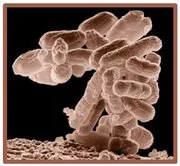 The presence of pathogens in fresh produce, responsible for foodborne illness outbreaks, is a serious problem in terms of safety and economic losses.
The presence of pathogens in fresh produce, responsible for foodborne illness outbreaks, is a serious problem in terms of safety and economic losses.To avoid outbreaks and the distribution of contaminated food on the market, food producers must assure that safety and control measures are followed throughout the entire production chain.
The international standard protocols for food-borne pathogens detection and enumeration are available, but they require 4-5 days before reaching results, this makes them not suitable for short shelf-life food products, such as fresh and fresh-cut produce. Furthermore, in the last years, the use of fast and reliable methods is needed to detect even low pathogen levels before produce packaging.
To respond to this need, the scientists from the Department of Agricultural and Environmental Sciences at the University of Milano (Italy) and the scientists from the Laboratory of Food Science and Technology at the Agricultural University of Athens (Greece), within QUAFETY European Project (2011-2014) on quality and safety of fresh-cut vegetables, have developed an indirect ELISA assay to detect the presence of Escherichia coli O157 and Listeria monocytogenes.
Bacteria isolation protocol, antibody working concentration and limit of detection were studied and optimized to verify the presence of the two bacterial pathogens in cucumber. The incubation times for antigens (overnight at 4°C), antibodies (60 minutes at 25°C) and for matrix reaction (30 minutes at 25°C) were selected.
The results show that the ELISA method is very sensitive with a detection limit lower than 103 cfu/g and it allows to isolate bacteria from 1 to 7 hours.
The analytical procedure can be completed in 1 day compared to the 4-5 days required when the respective ISO methods are applied. In addition, since vegetables might also contain non pathogenic bacteria along with the pathogenic ones, the choice of specific antibodies is crucial.
The scientists conclude that the protocol developed can be applied to detect the presence of other bacteria or viruses by choosing specific antibodies to be optimized in the ELISA assay.
Source: Cavaiuolo M., Paramithiotis S., Drosinos E.H., Ferrante A., "Development and optimization of an ELISA based method to detect Listeria monocytogenes and Escherichia coli O157 in fresh vegetables", 2013, Analytical Methods, 5: 4622-4627.
Further info: http://pubs.rsc.org/en/Content/ArticleLanding/2013/AY/C3AY40893K#!divAbstract
Contacts: www.quafety.eu
